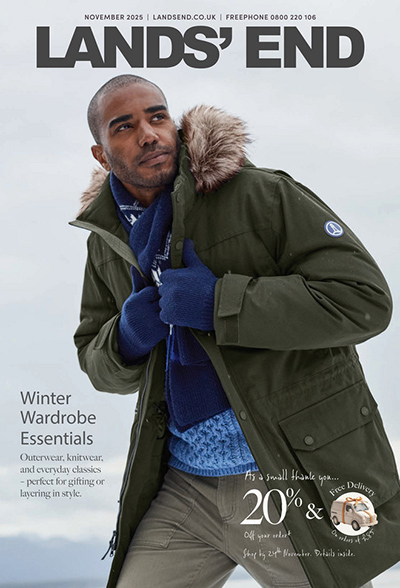Accessibility
At Lands’ End, we recognise the importance of providing a website that is easy to use and all-inclusive. It is vital to us that your shopping experience is positive and pleasant and so we are working very hard to make changes for the better.
We are currently working on making our website accessible to all user groups, including the disabled, the visually impaired and those with motor deficiencies and cognitive disabilities.
We aim to make our pages easy to navigate, whether customers are using screen readers, keyboard navigation or text-only browsers.
The following statement explains current and future plans for accessibility features which are being implemented to help you use our website. You can find out about this website’s current accessibility features in the sections below:
- General information
- Background, text and colour
- Non-text elements
- Links and navigation
- Frames and tables
As it is not always obvious how accessible a web page is, we would very much like to hear from anyone experiencing any difficulties when using our website. You can email us at accessibility@landsend.co.uk
General information
We’ve designed this site with accessibility in mind. Some of the general features include:
- The use of clear, simple language, which is easy to read and understand.
- The use of common web conventions.
- Avoiding the use of blinking or flickering elements.
We are working towards
The use of validated HTML and Cascading Style Sheets (CSS)
Standards Compliance
Our aim is to ensure our website conforms to at least level A compliance as specified by the Web Content Accessibility Guidelines (WCAG).
We have a number of tools to perform automated accessibility tests (as well as using reliable expert evaluation), which will include testing our pages using screen-reading applications.
Background, text and colour
Careful use of text colours, size and background colours can help people with a range of visual impairments.
We are currently checking the site’s font and background colour to ensure there are no combinations that adversely affect anyone with colour deficient vision.
Font and text size
We use clear, legible font for all text and headings. In your Internet browser, select View, then Text Size, and then choose to increase or decrease font size.
Style sheets
Much of our site is already available with cascading style sheets (CSS) for visual layout and we are currently working on the remaining pages.
Non-text elements
We are working towards providing alternatives for non-text elements on all pages (currently available on most pages) giving visually impaired and screen-reader users wider access to our website.
Images, videos and other non-text elements
We plan to make it possible to use our site without having to view graphics or images. All non-text elements, such as images, animations, symbols, audio, video and multimedia will have text equivalents. We plan to achieve this by providing descriptive alt attributes for them. Purely decorative graphics or formatting images will have empty alt attributes.
Scripts
Our website uses JavaScript to improve usability and the online shopping experience. To help you use the site, where possible, we plan to create alternative non-JavaScript pages for the most critical pages.
Links and navigation
Navigation of the website is a key consideration in our web design process. The aim is to make our website streamlined and simple to use, with page items placed in a logical order to help improve the experience for all users.
Navigation links will be consistent between pages throughout the site. We are reviewing accessibility using only the keyboard and navigating with JavaScript disabled.
Pop-up windows
Our website uses pop-up windows only when they are of benefit to the customer, for example, when it is important to see the browser window you’ve just navigated from in the background.
Forms and tables
We plan to use clearly labeled tables to help readers to understand the content on a page and to fill in content into correct form fields.
Frames
We do not use frames as they are a barrier to accessibility.






















